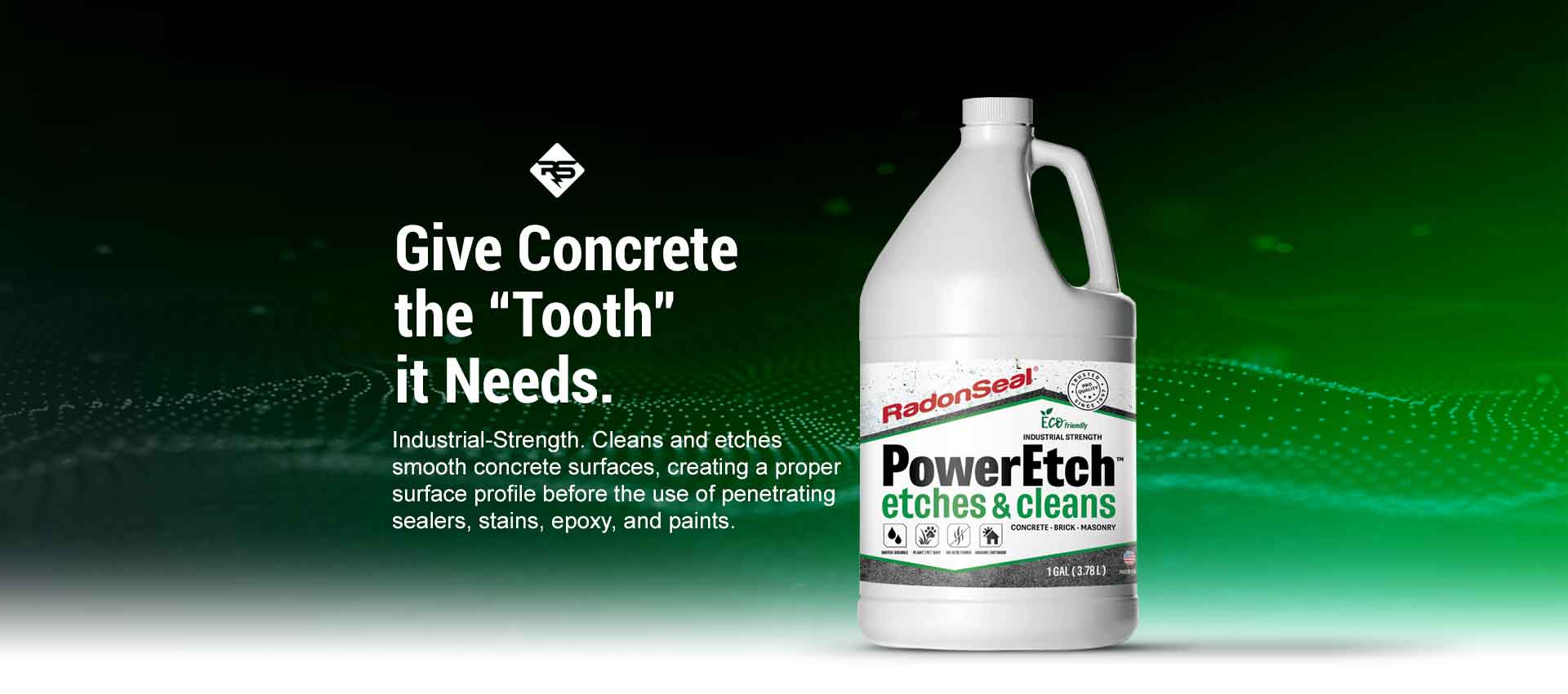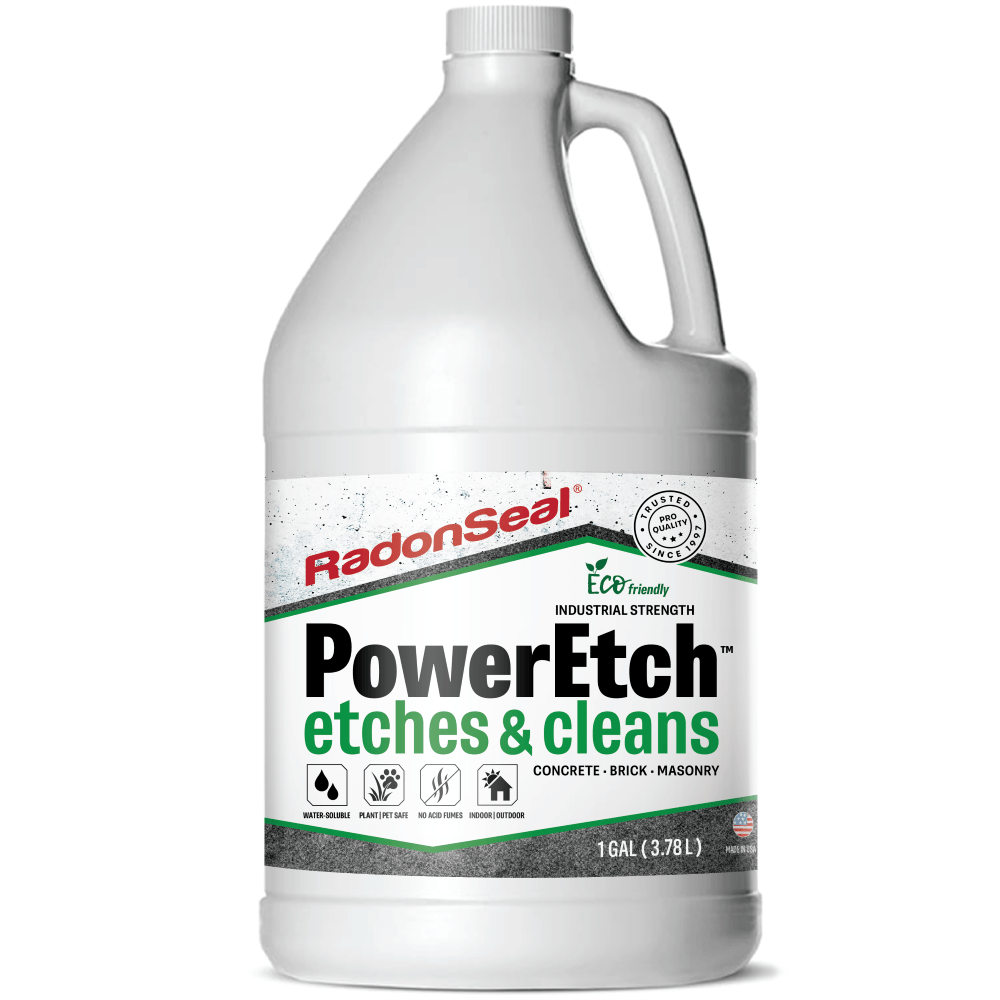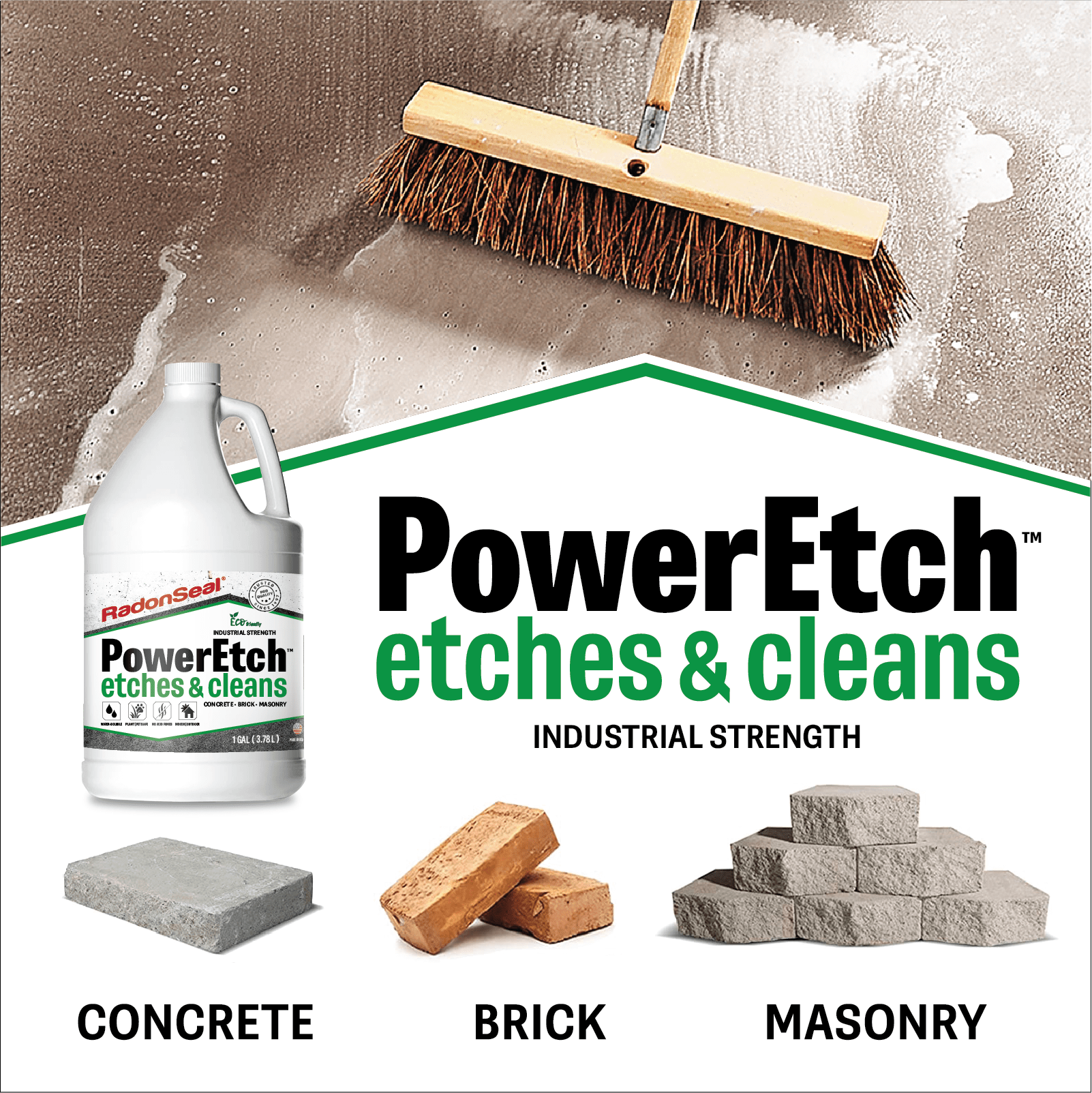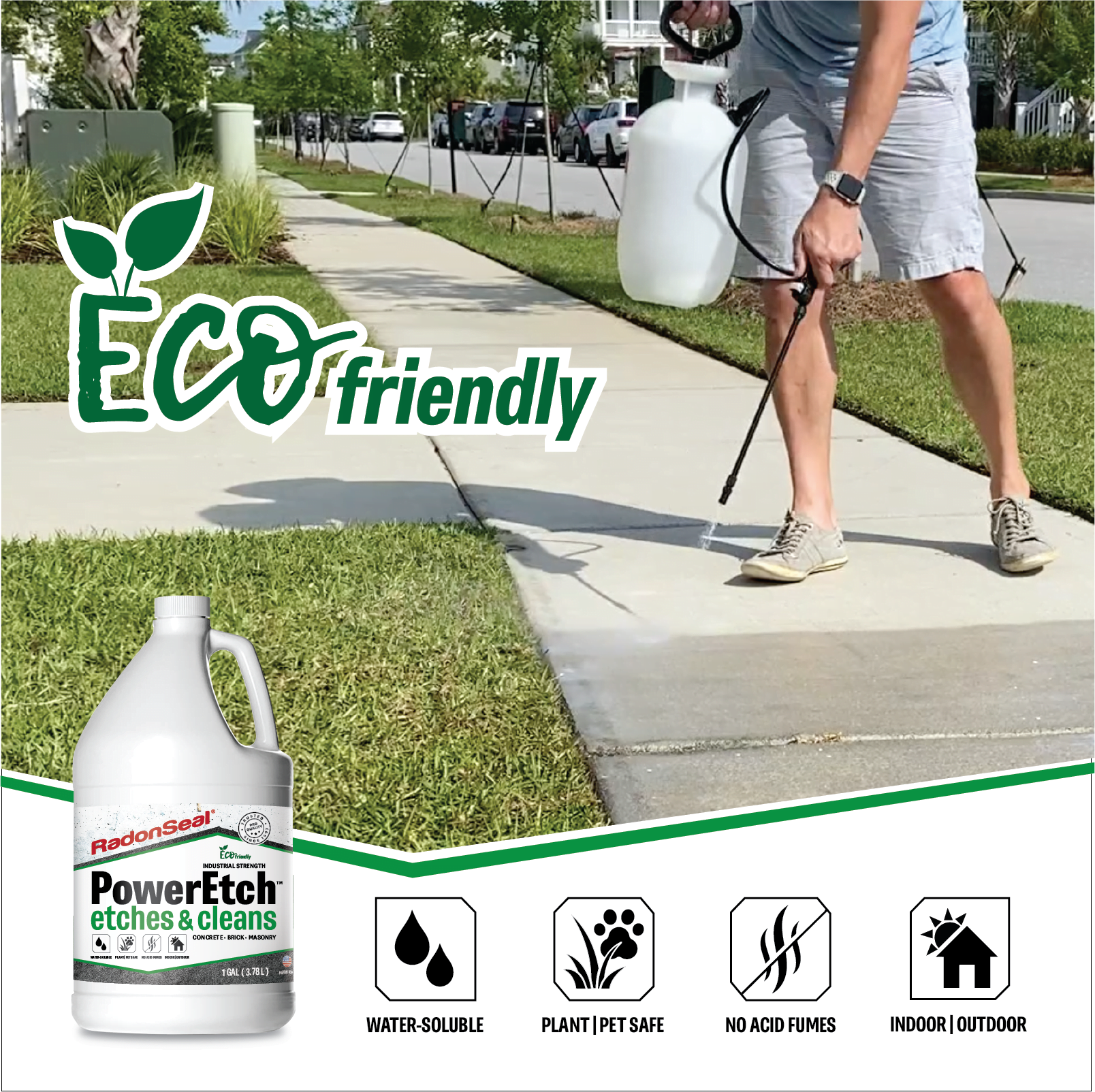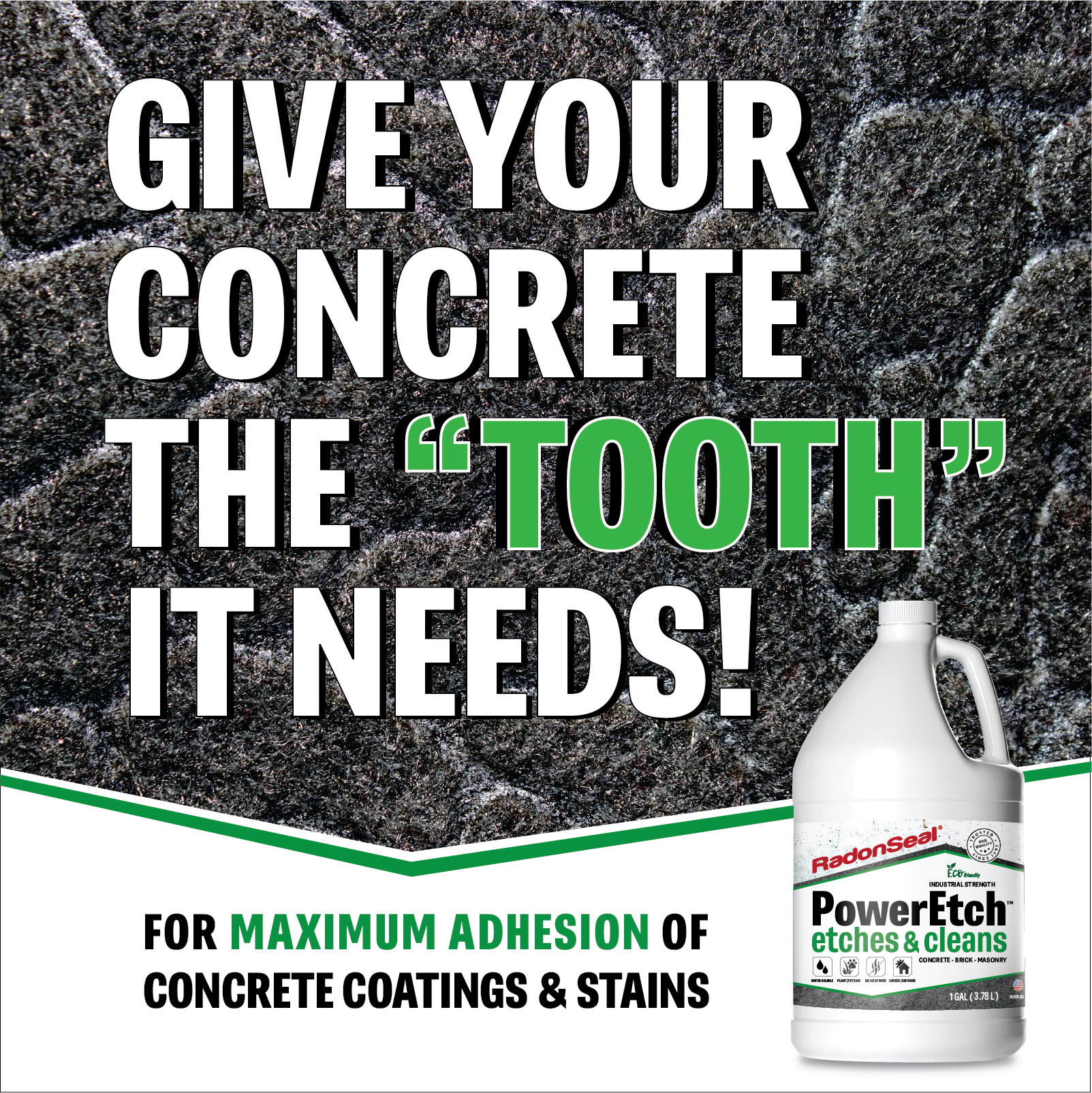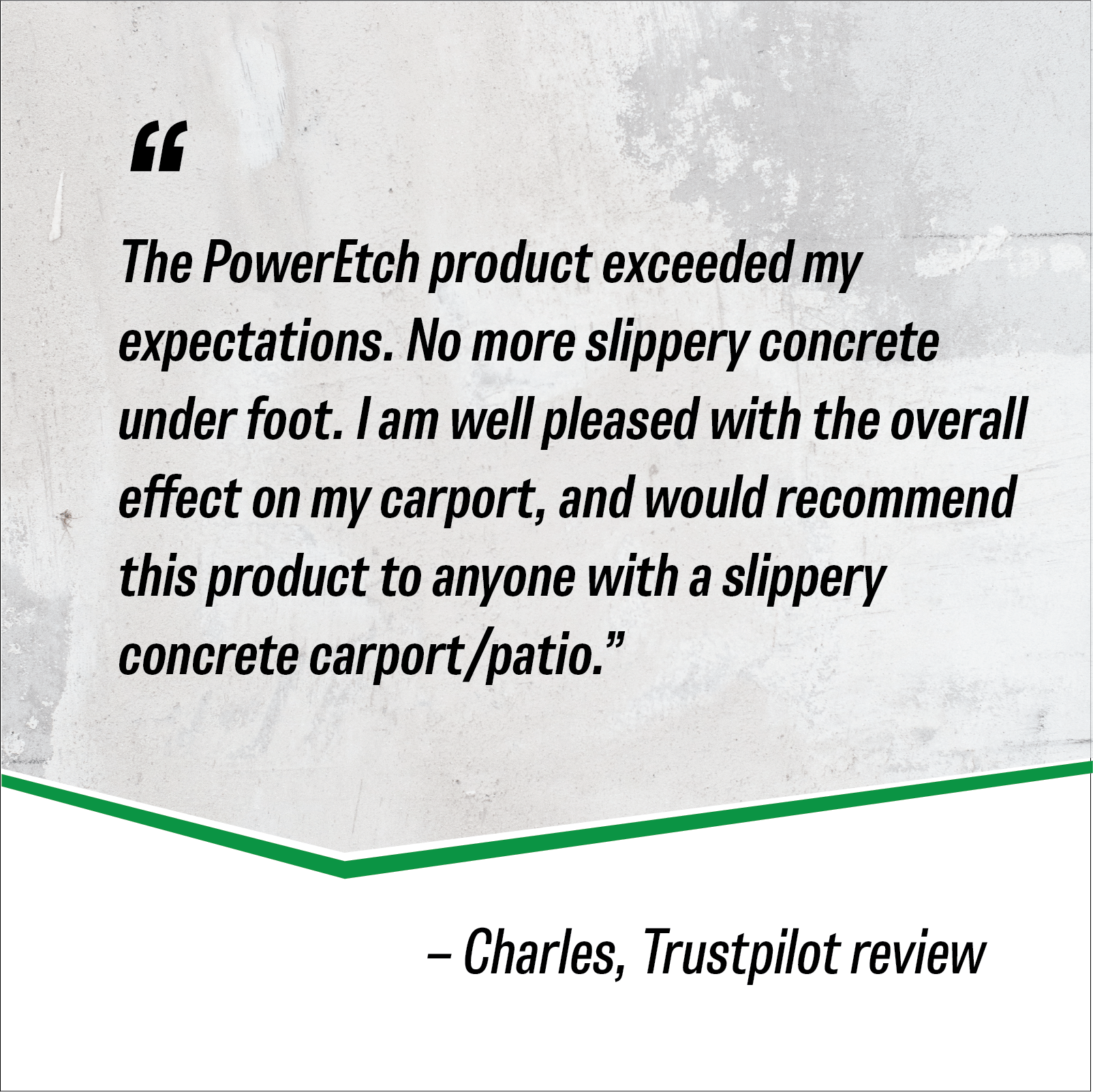Why Etching Concrete is Important
You are likely reading this article because you are interested in how best to prepare your concrete surface before applying LastiSeal Concrete Stain & Sealer or RadonSeal Deep-Penetrating Concrete Sealer. Maybe you have landed on this page curious to find a product that will take your concrete from looking “drab to fab!” Regardless of the intention, PowerEtch is the etching and cleaning solution that will properly clean, reduce pH, and prep your concrete floor.
When it comes to applying paints or surface sealers, coatings like epoxy or urethane, penetrating sealers, concrete stains, overlays, or levelers, the key to success is the surface profile of your concrete. Penetrating sealers and stains need enlarged pores to absorb into and paints and coatings the “tooth” to hold onto. If proper surface conditions are not met then the fruits of your labor may fail over a short period of time, not to mention the money you’ve wasted on the product!
Industrial-Strength Concrete Etcher
PowerEtch is specifically formulated to effectively clean and profile smooth-finished concrete surfaces and power-troweled concrete floors. Smooth-finished surfaces are often associated with commercial or industrial flooring, warehouses, garage floors, slab-on-grade construction, basement floors (walk-out), retail slabs, and storage unit slabs. PowerEtch is a commercial-grade waterborne etching solution that is strong enough to give concrete the “tooth” or “roughness” it requires.
Did You Know? – Many acid etching products contain masking agents used to “mask” hazardous or pungent odors. PowerEtch has no added masking agents and features low odor with fewer fumes
When To Etch Your Concrete & Masonry Surface
PowerEtch is predominantly used for etching and preparing power, floated, and screed-finished slabs for commercial and residential concrete slabs. However, it is not just for poured concrete. You can safely apply it to bare stucco, brick-and-mortar, pavers, grout, concrete blocks, and cinder blocks.
Use PowerEtch for the purposes of:
Enlarging the Pores of Concrete – Increase the porosity of hard-troweled concrete floors and outdoor slabs before applying penetrating concrete sealers, and water-based concrete stains (color pigments need to absorb into the surface). Open up the pores in hard-troweled floors before applying penetrating sealers such as; RadonSeal Concrete Sealer, LastiSeal Brick & Concrete Sealer, LastiSeal Concrete Stain & Sealer, and DryWay Water-Repellant Concrete Sealer.
Profiling a Concrete Surface – Give concrete the “tooth” or roughness required to improve the bond of concrete paint, concrete levelers, epoxy coatings, clear urethane sealers, self-leveling compounds, adhesive, and concrete overlays. Surface preparation is considered the most important step of any resinous flooring application.
Reduces the Alkalinity of New Concrete – New concrete that is less than 2 years old, is highly caustic and its pH (+11) should be reduced (less than 9) or it will slowly “burn off” most stains, paints, and flooring adhesives. As concrete cures, its pH level gradually drops, but it may take months for outdoor concrete or a year or more indoors. PowerEtch helps speed up the process.
Concrete Cleaner – PowerEtch is an effective cleaner against stubborn stains due to; efflorescence, mineral stains, rust stains, tannins, and leaf, nut, and pine cone stains, that cause shadowing. Cleaning will help rejuvenate the surface, making it look new again.
Did You Know? Concrete etchers do not remove concrete sealers, paints, or coatings. Such building materials are best removed either mechanically (grinding, sanding, blasting, or scarifying) or chemically (acetone).
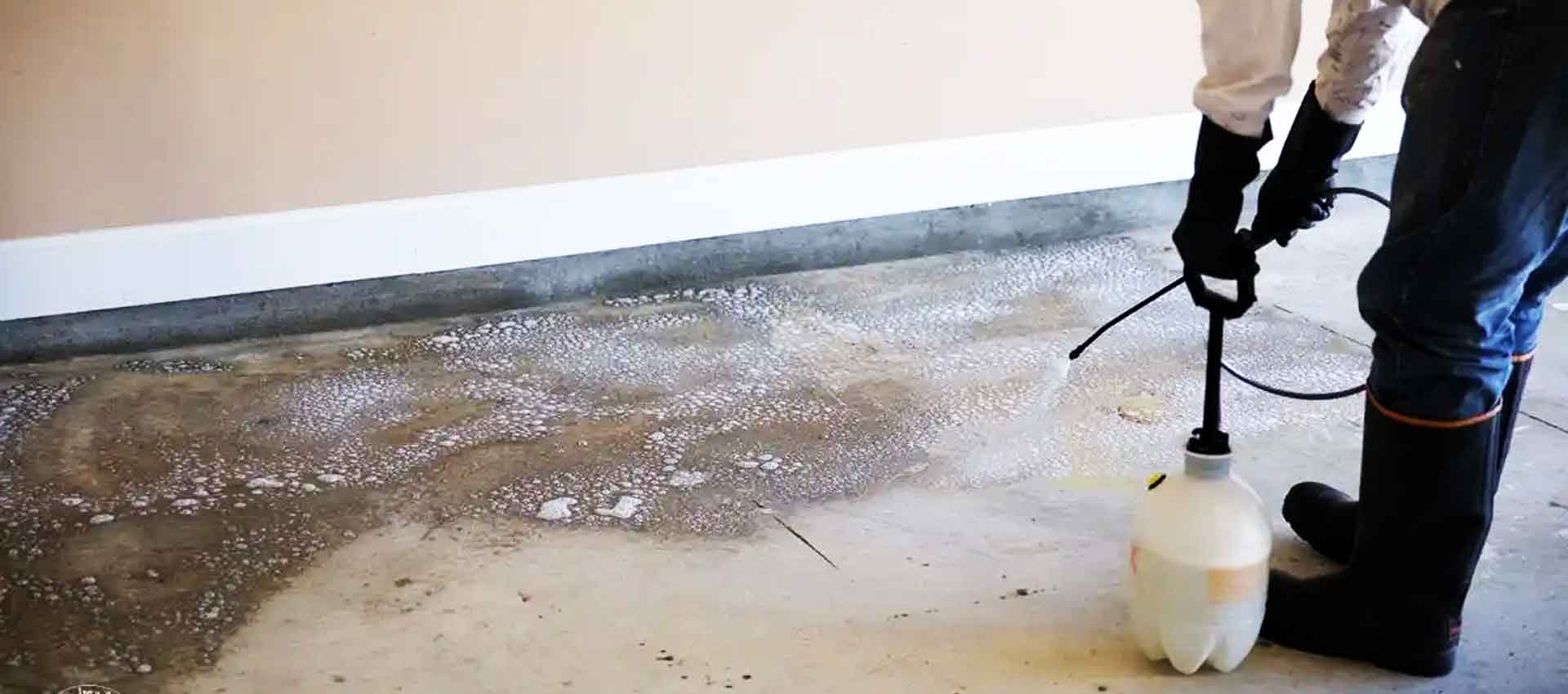
PowerEtch is a Safer Alternative to Harsh Acids
As the building industry and homeowners move towards safer alternatives (without surrendering effectiveness), PowerEtch sets the standard as an industrial-strength concrete cleaner and concrete etching solution. Taking years to develop, PowerEtch delivers the optimal balance between safety and effectiveness for the applicator and the concrete (no disfigurement).
- Indoor Use – No irritating fumes or offensive odor.
- Safer to Skin – Non-corrosive to skin. It may make your skin dry, but will not burn it.
- Safe for Concrete – Will not alter, disfigure, or cause cracks to the concrete surface.
- No Neutralization – Neutralize with water; ammonium or baking soda solutions are not required.
- Water Soluble – Simply clean application tools with water after use.
Order PowerEtch Today
Shipping – PowerEtch™ is not sold in stores but is shipped directly from the factory to your door. Orders received by 2 pm ET (M–F) are normally shipped the same day (ETA: 1-5 working days to lower 48 states). Expedited and International Shipping is not available for this product. Note that 5-gallon pails are only shipped by truck/freight delivery and the minimum shipping quantity is six pails of PowerEtch.
How about Other Etching Solutions?
“I am interested in using your LastiSeal Concrete Stain & Sealer product on my garage floor but I am unsure as how to best prepare the surface. Should I use muriatic acid before applying your products?” – Josh M., OR
For the average DIY homeowner who is preparing a concrete floor before staining, sealing, or painting, store-bought muriatic acid is not a user-friendly option. It is highly toxic, corrosive to the skin, and has a pungent odor that makes using it less suitable especially for interior applications. And unless you know exactly how to balance its concentration (pH), you run the risk of having a solution that may be too weak (less etching ability) or too strong (“burning” the concrete paste).
Etching solutions range from strong to mild (muriatic to vinegar) and there are pro’s and con’s to each. Typical chemicals used for etching concrete (concentration greatly affects their performance and toxicity):
- MURIATIC ACID – The least expensive. Vigorous foaming and etching but probably the most dangerous chemical you can buy for home use. Corrosive. Toxic fumes and suffocating odor that can burn the lining of the nose, throat and even the lungs. Use eye protection and a respirator. It can “burn” the concrete. Must be neutralized with baking soda or ammonia and repeatedly rinsed.
- PHOSPHORIC ACID – More benign and user-friendly than muriatic acid and less fumes. Can be used around acid vulnerable metals.
- SULFAMIC ACID – Available as a white powder that must be dissolved in water when it basically becomes sulfuric acid. Less corrosive than muriatic acid. Used in household cleaning products.
- CITRIC ACID – Lower strength. Scrubbing with a stiff bristle broom will help the etching. User-friendly, non-corrosive, and biodegradable. Great for use indoors on basement floors and slab-on-grade floors. You can check out our EasyEtch Concrete Etcher & pH Reducer
Coverage
Coverage rates vary (approximate): 200-250 sq. ft. per/gal.
Preparation and Conditions
Before using PowerEtch the surface of the substrate must be sufficiently clean. Remove ground-in dirt, oils, grease, dust, paints or sealers, mold and mildew, and algae growth. The cleaned surface should not “bead” water.
DID YOU KNOW? Most acids will not clean concrete contaminated with oils or grease. Commercial-grade degreasers like our deep-cleaning Novion® Universal Concrete Cleaner should be used first before applying PowerEtch.
For best etching results, apply PowerEtch™ Concrete Etcher in suitable weather conditions:
- AMBIENT TEMPERATURES – Air and surface temperatures between 60 and 90 ºF (minimum 45 ºF).
- DRY SUBSTRATE – Allow the concrete to dry thoroughly after heavy rainfall (1-2 days) or pressure cleaning (3+ days).
- NO CONDENSATION – Surface temperature at least 5 ºF above the dew point.
- NOT TOO HOT – Do not apply when the surface is very hot in direct sunlight to avoid flashing, or in strong winds.
Mask aluminum, soft metals, and glass. Cover or saturate plants, bushes, and grass surrounding the area with water.
Tools Needed
PowerEtch™ is a ready-to-use etcher that can be simply applied using a hand-pump “garden” sprayer. Alternatively, you can use a plastic watering can, or for small confined areas use a 3/4” paint roller.
– Stiff bristle broom.
– Clean water.
– Empty bucket, mop, or wet shop vac (indoor applications)
Quick Application
Use sound common sense practices during application (see SDS sheet for health and safety precautions). Before opening, read all warning labels and data sheets. Use only as directed.
- STEP 1 – Spray on a saturating application of PowerEtch™ and scrub into the surface with a stiff bristle broom. Allow the solution to react for 5 to 10 minutes. It will effervesce but if there are areas without effervescence, apply more etcher. Do not allow the surface to dry! (That would leave hard-to-remove salts in the surface.)
- STEP 2 – Rinse off the area with plenty of clean water – pressure clean, hose off, or mop.
- STEP 3 – Allow to dry.
- STEP 4 – Inspect the area to check for “smooth” spots that may require a second application (repeat steps 1-2 if necessary).
When reducing the alkalinity of young concrete, you can check it with pH test strips or pH pencils. The ideal resulting reading would be 7 (neutral) but a range of 6-9 is acceptable for most stains, paints, and flooring adhesives. If pH is still above 9, repeat the etching process. If pH is below 6, rinse the surface again to remove acid residue.
STAINING, SEALING, COATING – Allow the surface to dry completely (1-3 days) prior to applying stains, paints, sealers, or coatings.
